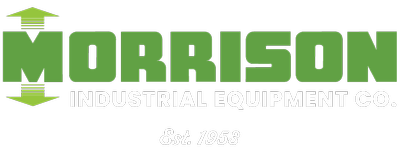How much does a forklift cost?

It’s time to add a forklift to your fleet. Maybe it’s a replacement for an existing truck that’s outlived its usefulness. Or maybe your operation has evolved and requires more capacity or different capabilities.
No matter the reason, you may be wondering about the cost of a forklift. It’s a simple question but the answer is far from simple. There are many factors that influence forklift price. In fact, the answer to the question, “How much does a forklift cost?” is usually “It depends.”
What goes into forklift pricing?
Buying a forklift is similar to buying a car. Before you buy a car, you may ask yourself:
- How do I plan to use this vehicle?
- How far will I drive it each day?
- What road conditions does it have to handle?
- What features do I want?
With cars, there’s a wide range that includes everything from low-cost, utilitarian vehicles to expensive, luxury models. While there aren’t luxury forklifts, there's certainly a range of options. Here are the factors that affect the cost of these options.
Load capacity
Load-carrying capacity is a major factor in forklift pricing since it defines how the truck can be used. Higher load capacities command higher prices. A 10,000 lb. capacity truck’s price may be double that of a 5,000 lb. capacity truck. Carefully consider the load capacity you need.
Fuel type
Forklifts are powered by electricity (batteries), liquefied propane (LP), or diesel.
Electric forklifts may have higher price tags than LPG and diesel trucks because when you buy electric, you pay for the “fuel” upfront as the industrial battery is an integral part of the forklift. The type of battery you specify (usually lead acid or lithium ion) significantly affects price.
Diesel forklifts may have somewhat higher price tags than similarly equipped LP trucks because diesel forklifts have heavier, more durable parts due to the way their engines operate.
Purchase price is a moot point, of course, if your application cannot accommodate the emissions of an internal combustion engine.
Mast height
Standard forklifts come with a 189-inch three-stage mast, but variations exist for different applications. A non-standard mast height may add to a forklift’s price tag.
What does your application call for? Will this forklift need to operate in areas with limited space, like a semi-trailer? Or will it need to pick and place pallets on high shelving?
Tires
Cushion tires and air-filled pneumatic tires are the base option for most forklifts. There are other specialized types to handle certain applications like slippery conditions. Tire type affects the purchase price. If your application calls for something beyond the standard, be prepared to spend more to get them.
Forks
For mid-range models, there isn’t much price variation for forks. If you need a larger model, forks may add to the forklift’s price tag. There are a wide range of fork attachments your application may require, such as paper roll clamps, rotators, carton clamps, layer pickers or spark retardant forks that will be added as an extra cost.
Options and accessories
The more optional features and accessories you want, the more expensive your new forklift will be. Consider if you’ll need:
- Enclosed cab
- Heater in cab
- Custom paint scheme, like your company’s colors for example
- Cold storage package for freezer applications
- ES, EE, EX-ratings for working with/around hazardous materials
- Safety features like blue and red zone safety lights, LED headlights, horn
- Seat belts
- Suspension seats
Factor in operating costs
Beyond the initial purchase, consider ongoing expenses like fuel, maintenance, projected lifespan, and warranty coverage. Calculating the total cost of ownership is vital for budgeting and long-term planning.’
Purchase or lease?
The decision of whether to buy or lease a forklift is important to your organization's finances. The basic rule is that if an item will increase in value, buy it. If it will decrease in value, then lease (or rent.) Of course, there are exceptions.
Leasing lets you acquire a forklift without a down payment. The equipment is paid for out of the operating budget, not capital reserves.
How about a used forklift?
If the cost of a new forklift doesn’t fit your current budget, purchasing a used truck may be the answer. At Morrison, a good quality, low-hour 5,000 lb. forklift is usually in the $25,000-30,000 range.
Pricing used forklifts takes all the above factors into account plus the following:
- Condition: Is it in good shape or at the end of its useful life?
- Maintenance history:Has the owner done all the recommended maintenance?
- Age:When was it manufactured?
- Hours:How many service hours has it been used?
- Supply & demand:How hard-to-find is this model? Is it in demand? (As of this writing there is a shortage of good quality, used forklifts.)
- Warranty:Is the forklift under warranty or sold As-Is? How much of the warranty period remains?
Morrison has a large inventory of used forklifts and can help find a model that suits your application.
When is renting a good business decision?
If your need for an additional forklift is time-limited, a rental is an excellent option since it saves you the long-term investment a purchase means. A rental can help keep productivity up during a seasonal growth spurt or as a temporary solution until a new forklift fits your budget. Also, if you want to test a forklift before buying it, you could rent it first so you can try it out in your facility.
A partner you can trust
Understanding all of these factors will help you make an informed decision when acquiring a forklift, ensuring it aligns with your operational requirements and budget. For expert guidance and support in selecting the right forklift for your needs, visit Morrison Industrial! Whether you're looking to purchase, lease, or rent, our team is here to provide tailored solutions to help your business thrive.
©
